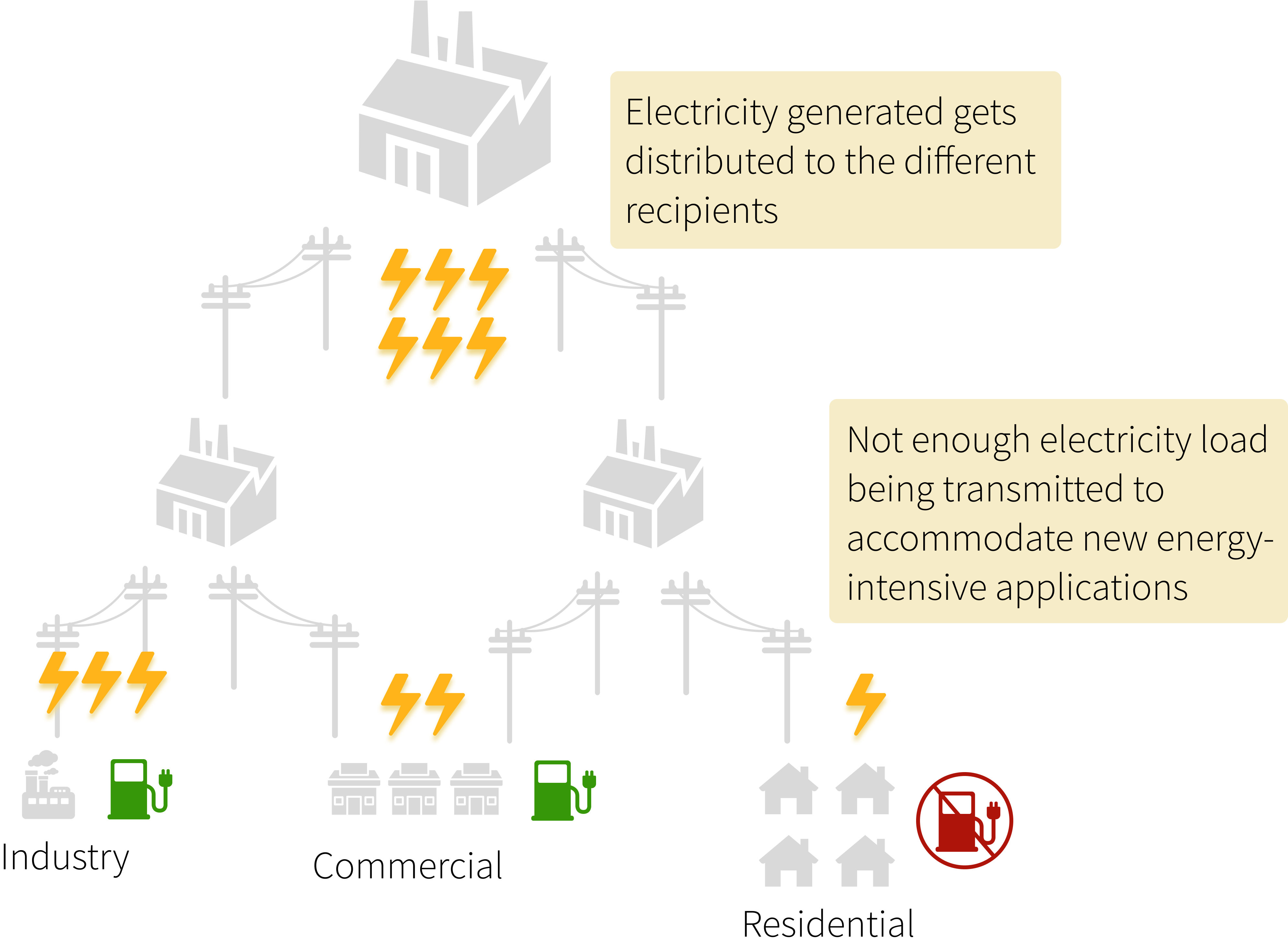The adoption of zero emission vehicles (ZEV) is more complicated than just people purchasing them. An infrastructure needs to be in place to accomodate for this increased use of ZEVs -- the most obvious being the electrical grid.
Here we explore more about the electical grid, its stress under extreme weather, and its ability to take on increased load of electric-vehicle charging.

Stressors to the grid make it difficult to support zero-emission vehicle adoption
Grid Overview
This is the basic framework of the electrical grid. It includes generators, lines, and substations. When the grid is stressed, a breakdown of any of these parts will affect the ability to provide electricity to industry, commercial, and residential.
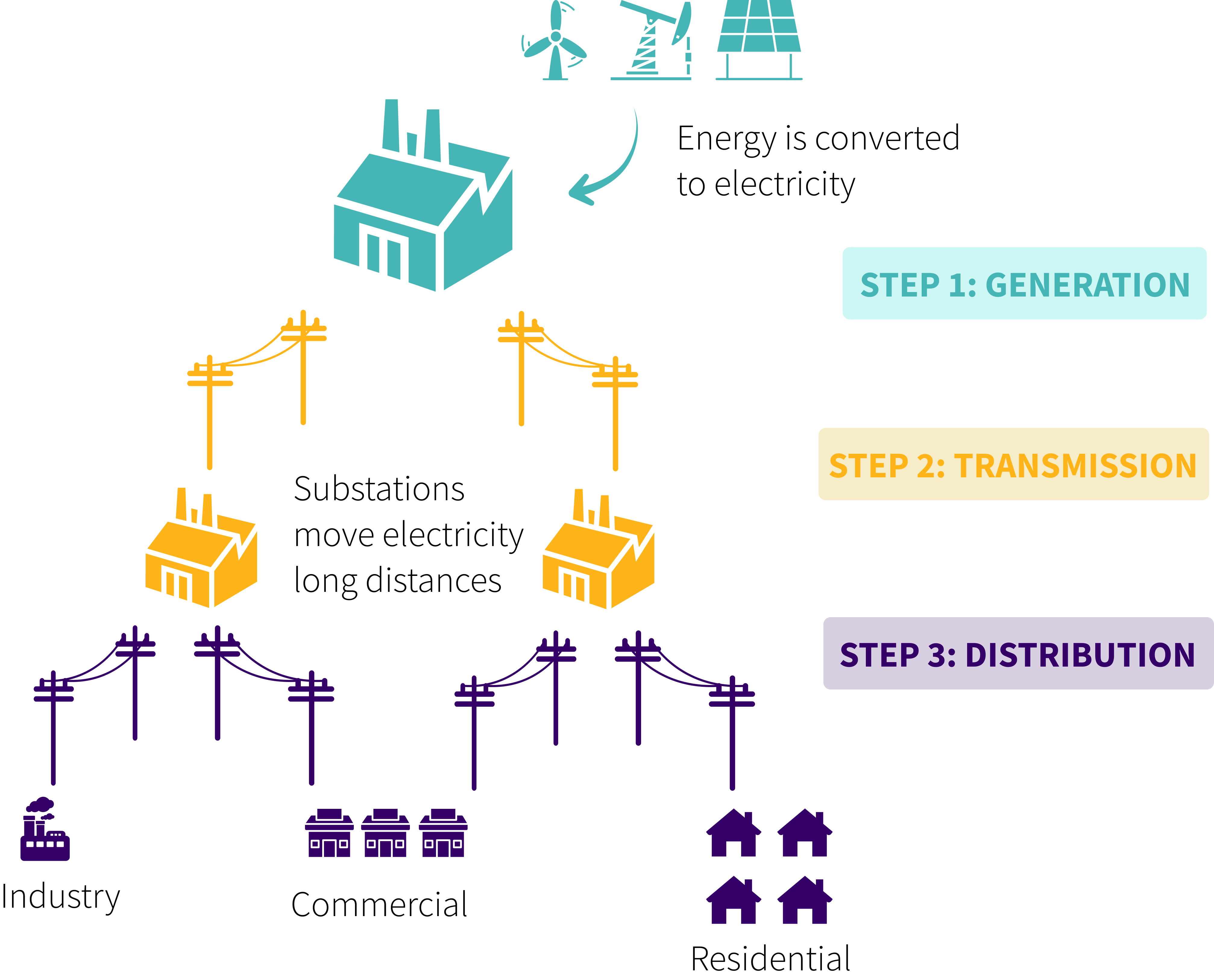
Extreme Weather as a Grid Stressor
Extreme weather negatively impacts ability to provide consistent electricity.
Burillo et al.’s (2019) case study on current and future stresses to electricity infrastructure in Los Angeles County, California found that rising air temperatures exacerbate grid vulnerabilities by increasing risks of electrical grid overload and failure.
How does this relate to ZEV access?
In extreme weather events, electricity might need to be shut off, preventing people from charging their vehicles. Outages could last for days on end, hindering the use of EVs.
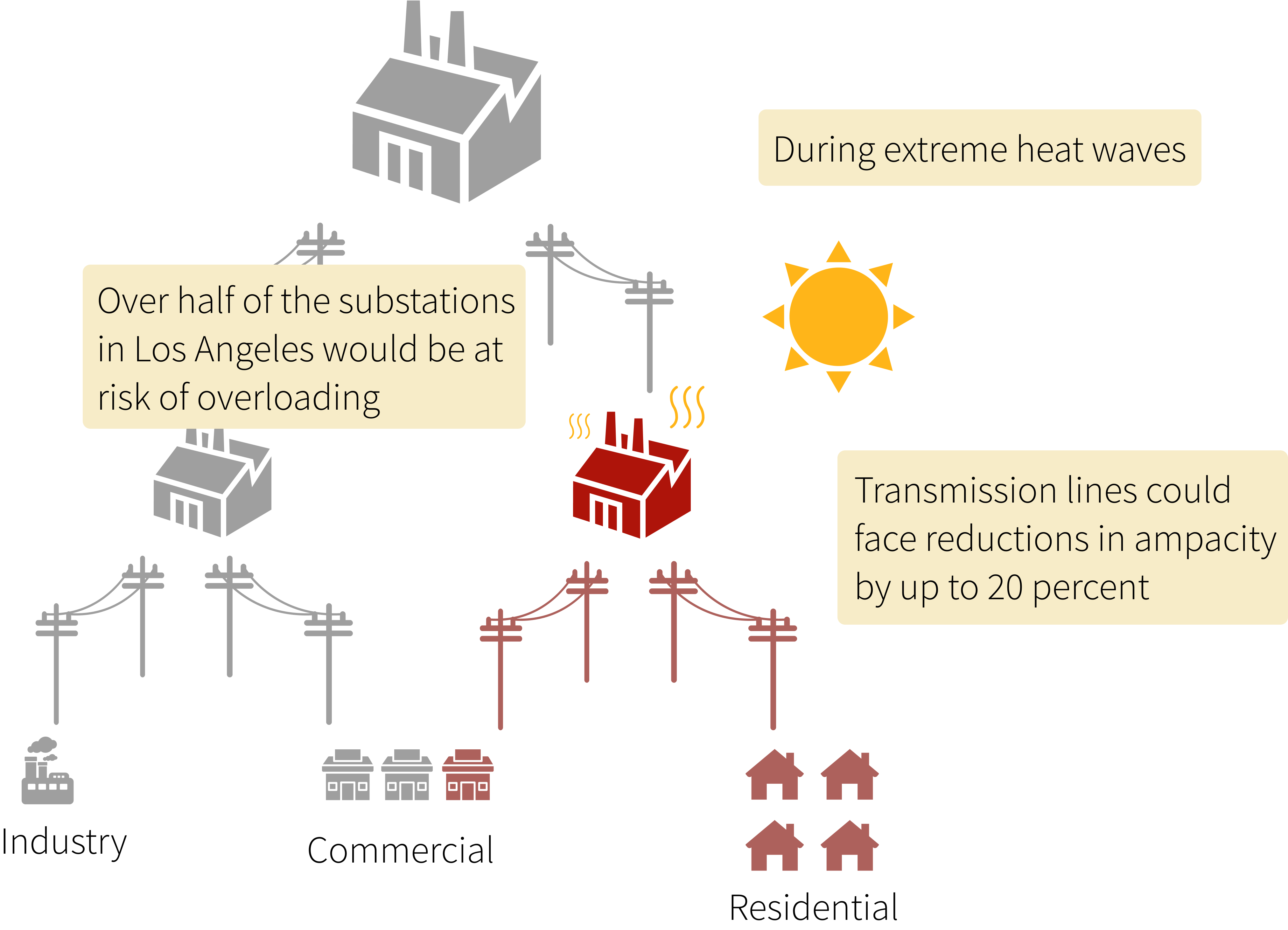
Example: 2023 January Mass Power Outages in California
Most recently we've seen California's grid stressed under extreme weather conditions of winter storms, high winds, and heavy rainfall.
The California Governor’s Office of Emergency Services reported over 424,000 people without power at one time. Power outages lasted for, with some communities without power for over 4 consecutive days.
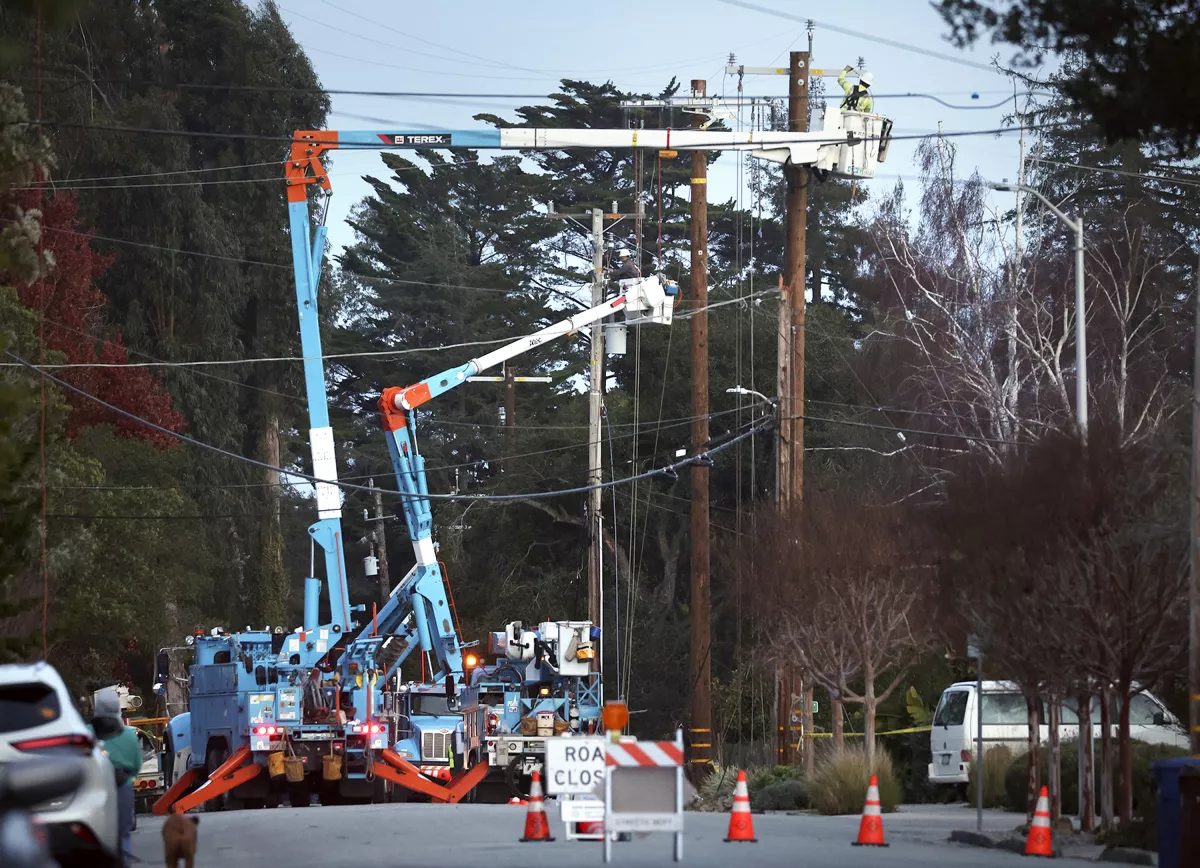
PG&E fixing powerlines (LA Times, 2023)
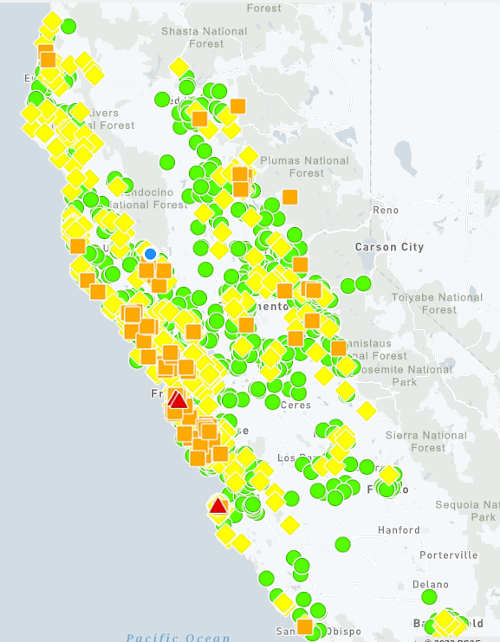

PG&E outage map for Jan. 4, 2023 (Lake County News, 2023)
At-Home Vehicle Charging as a Grid Stressor
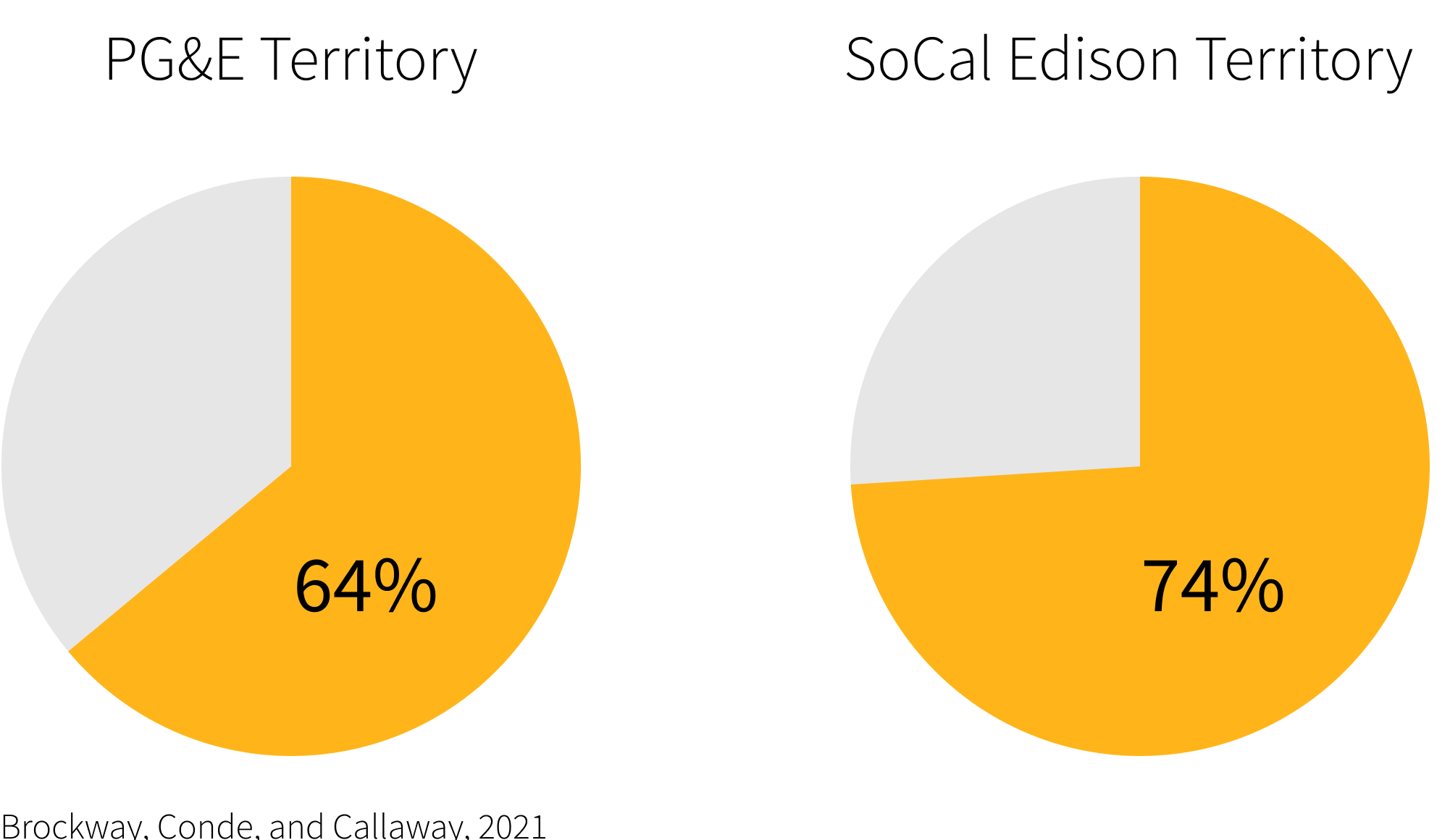
Upgrades to the electrical grid or increased residential solar photovoltaic (PV) adoption is necessary to meet the demands of additional energy-intensive applications, such as electric vehicle charging.
However, the grid likely also lacks adequate hosting for mass adoption and installation of solar PV.
Grid constraints on solar PV adoption include thermal constraints, power quality constraints, protection grid constraints, as well as physical building suitability for PV installation.
